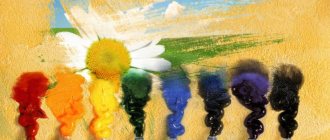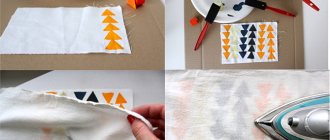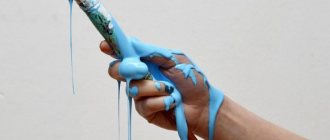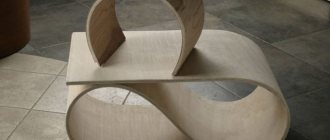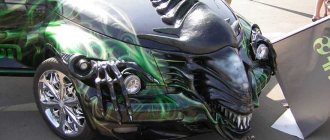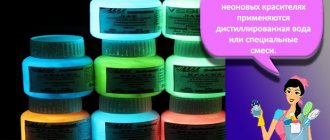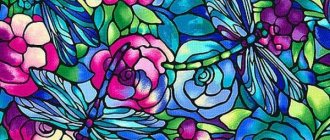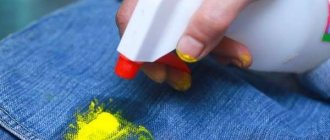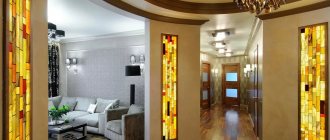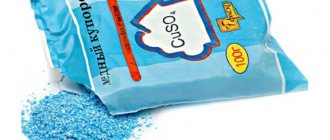What fabric can be dyed
There are a lot of fabrics for clothing. Conventionally, they can be divided into natural and artificial types. Cotton, silk, and linen are more suitable for thematic processing. The fact is that natural fabrics:
- They absorb new paint well;
- Less likely to react to various chemical dyes;
- They have a uniform structure of matter.
Combined fabrics such as viscose are less suitable for dyeing. In general, all budget and versatile products are made from several fabrics.
Therefore, it is better not to process artificially created synthetics manually, because it can quickly lose color.
If there is no professional service, you will have to select painting techniques and consumables depending on the type of synthetics:
- Bologna fabric – welcomes application of paint in two layers by hand;
- Polyester - reacts well to acrylic;
- Universal denim composition - renewed when using heated dye.
The composition of the fabric matters a lot when dyeing is at stake. The corresponding indicator also allows you to determine the complexity of processing.
Rating of quality fabric paints in jars
Javana S. Kreul
This set from a time-tested brand will be an excellent solution for both a novice artist and a professional. Can be used for painting thin fabrics and synthetic fabrics. Also used for drawing on paper, wood and leather. Suitable for working with different techniques. The package includes everything you need to get started right out of the box. The set contains 5 jars of 20 ml each, a reserve colorless outline, salt and two pieces of fabric 45x37 cm. Also included in the package is a brush, pins and stencils. The brand is one of the first manufacturers of varnishes and paints in Germany. The product range is wide and updated every year.
The average price of a set is 2158 rubles.
fabric paints Javana S. Kreul
Advantages:
- equipment;
- product from one of the best German manufacturers;
- multifunctionality;
- designed for dyeing not only fabric, but also other materials;
- safe composition.
Flaws:
- not identified.
Setacolor PEBEO
This set is designed for painting and coloring light-colored items. The water-based product can be used not only for painting, but also for decorating canvases and applying patterns of any complexity. The manufacturer assures that the supplied material is suitable for working with leather, non-woven fabrics, mixed fabrics, polyester, jacquard, velor, jersey, knitwear, wool and cotton. Paint color – matte. The strokes are applied evenly and do not smear. Do not affect the degree of elasticity of the selected fabric. It should be noted that the contents of the jars can be mixed with each other to obtain new shades. After opening, the jars are shaken thoroughly. After application, the smears will take an hour to dry completely.
This brand is one of the largest French manufacturers of materials and accessories for artists. The products first appeared on the shelves in 1919. Over the years, the quality of the goods supplied has improved, which has been repeatedly noted in numerous reviews. According to professional artists, it is this company that is best to buy the appropriate products and components when working with canvases.
Cost – 249 rubles.
fabric paints Setacolor PEBEO
Advantages:
- water based;
- the contents of the containers can be mixed with each other;
- wide range of finished products;
- affordable price;
- rulers are divided by type of fabric.
Flaws:
- not identified.
Grunge it Viva Decor
This popular model is designed for creating decorative elements and lettering in a grunge style. The model is recommended for use with products of natural origin. These include silk, linen or cotton. It is also allowed to use textiles that contain no more than 20% synthetic fibers. The composition penetrates deep into the fabric, and after washing it retains its original elasticity. Before use, shake the containers thoroughly. To avoid mistakes, it should be noted that you need to prepare the clothes for dyeing. We are talking about machine wash, excluding the use of softeners and conditioners.
To apply the design, you can use stamps, stencils, rollers, brushes or the blotting method. After completing the manipulations, you must leave the work surface alone for some time until it dries completely. To secure the application, you can use an iron (temperature no higher than 30°C).
How much does the kit cost? The purchase will cost 568 rubles.
fabric paints Grunge it Viva Decor
Advantages:
- ease of use;
- lack of turnover;
- can be mixed with each other;
- Baking sketches with an iron is allowed;
- German quality.
Flaws:
- high price.
RAY, set of 8 colors, 15 ml each
This set will be an excellent solution for those people who decorate things and clothing at home. Allows you to turn even your wildest fantasies into reality and transfer them to canvas. The basis is the use of water-based paints. The lines will fit well on both natural and synthetic fabrics without the risk of smudges. The colors are vibrant, eliminating the need to re-trace lines for best results. At the end of the manipulations, the manufacturer recommends securing the result by ironing. After such actions, the pattern will become resistant to subsequent washes.
Produced by a domestic brand that needs no introduction. Specializes in the production of goods for children's creativity and consumables. Due to this, many people know the company from their school desks. Modern equipment and technologies are responsible for the high quality of the products offered. The products are considered completely safe and enjoy a well-deserved reputation in the domestic market.
Average price – 115 rubles.
fabric paints LUCH, set of 8 colors, 15 ml each
Advantages:
- excellent light fastness;
- economical consumption;
- ease of application;
- safe composition;
- time-tested brand.
Flaws:
- not identified.
Which dye to choose for fabric
In addition to the origin of the fabric, the condition of the dye itself affects the ease of dyeing.
The latter may look like:
- Liquid mixture – suitable for spot painting;
- Spray can - used for painting large areas of fabric;
- Powder - used for various purposes.
If it is necessary to create a focus of attraction on the surface of clothing, you can use the so-called. rubber paint, which is liquid plastic.
It is used in a limited state, because... after drying it acquires a relatively rigid state.
Acrylic
Acrylic-based dyes are the most common material for giving the desired look to fabric.
This paint has the following advantages:
- Dilution in water – reduces product consumption and minimizes the release of toxic substances;
- Quick drying – speeds up the painting process;
- Mixing different colors helps create a unique palette.
It is recommended to paint natural fibers with acrylic paint - cotton, silk, linen. The finished fabric can be washed by hand at temperatures up to 30 degrees Celsius.
Advantages and disadvantages of acrylic paint for fabric
To choose an acrylic color for application to fabric, you need to find out what features, advantages and disadvantages it has. This will help you understand whether it is possible, for example, to use acrylic painting on raincoats, jackets, bags, umbrellas and other things that are used outdoors in wet weather. Or, for example, find out how acrylic paint will behave on slippery silk or synthetic fabric.
Linen bag trimmed with braid, lace and painted with acrylic paints Source pinterest.ru
Aniline
Aniline dyes are produced in powder and liquid form. Therefore, if you need to paint a thing, you have to pour the completely prepared solution into a container or aerosol spray.
As for the properties of aniline dye, they are in many ways similar to the properties of acrylic:
- Possibility of dissolving consumables in water;
- Suitability for natural fabrics;
- Mixing different colors;
- Accelerated drying.
True, the last two properties work when using hot water. In particular, we are talking about a temperature of 60-95 degrees. But in its finished state, aniline paint is resistant to washing solutions.
Another pleasant fact is that aniline is suitable for mixed fabrics, provided that the proportion of artificial fibers is no more than 60 percent.
Rating of the best paints for fabric in the form of outlines
DECOLA Paints for painting
This set includes 12 20 ml bottles. Designed for applying decorative patterns to synthetic, silk and natural fabrics. A great way to show your creativity and create a masterpiece at home. Due to the convenient form factor, the designs can be used by a beginner in the world of art. The product is suitable for free-form painting, as well as reservation using fabric contours. Dries quickly. To fix the color, heat treatment (iron) will be required. After 48 hours of drying, machine washing is allowed.
The substance penetrates deeply into the fibers. The package includes: gold, black, purple, sky blue, green, orange, white, silver, dark blue, turquoise, red and yellow pigment container. Containers should be kept tightly closed. After finishing work, auxiliary accessories should be thoroughly rinsed under warm running water. Before starting work, the composition is thoroughly mixed. Supplied in cardboard packaging with a standard logo.
How much does the kit cost? The purchase will cost 1252 rubles.
fabric paints DECOLA Paints for painting
Advantages:
- wide range of colors;
- rich shades;
- drying speed;
- ease of use;
- manufacturer's warranty.
Flaws:
- not identified.
TAIR Set of contour acrylic paint for fabric and leather
This popular model belongs to the category of acrylic paints that can be used to apply patterns to various fabrics and leather. These contours are produced in small tubes, which facilitates the subsequent process of applying the substance to the work surface. The composition can also be applied directly from the tube. Due to its optimal consistency, the substance penetrates deeply into the fabric fibers, giving a uniform color. It should be noted that the fabric will not lose elasticity and will remain just as soft.
Average price – 494 rubles.
fabric paints TAIR Set of contour acrylic paint for fabric and leather
Advantages:
- rich tones;
- ease of application;
- drying speed;
- multifunctionality;
- form factor.
Flaws:
- not identified.
PEBEO Paints for painting
This type of fabric paint is available in outline form. Due to the modern form factor, the composition can be applied without auxiliary accessories, provided that the person knows this technique. The color is rich, and the substance adheres well to the fabric, penetrating into the thickness of the fibers. The first wash can only be carried out on a delicate cycle at 40°C, and not earlier than 72 hours after the pattern has completely dried.
Cost – 349 rubles.
fabric paints PEBEO Paints for painting
Advantages:
- drying speed;
- ease of use;
- rich tone;
- convenient form factor;
- wide range of colors.
Flaws:
- not identified.
Stamp ink
This dye owes its name to the stamp. The fact is that initially stamp inks were used for office stamps, because... their composition takes on a convex shape and dries quickly.
However, when changing the stamp dye formulation, the following opportunities opened up for designers:
- Good impregnation due to water-glycerin base;
- Resistant to bleaches when using alcohol-based paint;
- Obtaining a bright fragment using an oil base (the downside is that the oil takes a long time to dry).
As a result, stamp inks differ from each other depending on the base for dilution. The paint itself is environmentally friendly.
It comes in the form of a liquid that must be diluted with a specific solution. The choice of the latter depends directly on the composition (base). Therefore, the use of stamp ink sometimes portends difficulties and expenses.
This shows the unpopularity of the corresponding dye. On the other hand, it can be used to a limited extent - to create individual bright fragments.
Fluorescent dye
This paint is also called luminous and invisible. The fact is that the substance plastisol, when a fluorescent plasticizer is added, changes its color depending on the effect of UV radiation. Moreover, the colors themselves can be red, pink, yellow, etc.
It is advantageous to use plastisol-based dye for the following purposes:
- Decoration of masquerade costumes;
- Drawing of club clothes and shoes;
- Design of sportswear and children's clothing to make it visible in the evening;
- Logo printing.
Plastisol-based dye has a relatively high level of viscosity. Therefore, it is recommended to use it as a covering material in certain areas.
If the fabric needs to be made completely luminous, then the thematic dye will have to be well diluted.
Types of dyes
Gone are the days when Iran's right hand was cut off for importing artificial dyes. Now, even in their homeland, indigo plants actively synthesize blue pigment to dye denim fabric.
Based on their composition, dyes are usually divided into:
- Acrylic
- Aniline
- Stamp
- Plastisol
- Natural
The choice of a specific paint depends on the purpose of use and the composition of the material. Natural and aniline dyes are best suited for uniform dyeing, and luminous and acrylic dyes are best for painting on fabric.
Acrylic paints
The most popular dyes for silk, wool and cotton fabrics today are acrylic dyes. They are convenient for applying both small dot images and creating entire masterpieces. Spectacular panels, small napkins or original blouses can become a source of pride for you.
The technique of painting with acrylic paints is identical to painting with watercolors or gouache. Draw an image onto the fabric with a pencil or a special marker, and then use a natural bristle brush. To avoid going beyond the boundaries of the drawing, use a colorless outline.
For painting on fabric, water-dispersion based acrylic paints are used. They are odorless and dilute well with water. After complete drying, they become waterproof and indelible from the fabric. However, in order to avoid streaks, it is recommended to wash such items by hand, at a water temperature of no higher than 40 degrees.
Acrylic dyes are produced in the following types:
- In tubes. The most economical form factor. Allows you to maintain the freshness of paint for a long time.
- In cans. Spray paint is used to color large areas of fabric. It should be taken into account that the material itself becomes rigid and stops stretching.
- Spray. Unlike aerosol, the dye is sprayed by droplets. It is not explosive because there is no pressure inside.
The best manufacturers of acrylic paints:
- Simplicol (Simplicol)
- Decola
- Marabu
- Dylon
Aniline dyes
This type of dye is available in powder or liquid form. Suitable for single-color dyeing of natural fabrics.
As a rule, synthetic or mixed fabrics containing more than 60% artificial threads are difficult to redye.
The standard sequence of working with these paints is as follows:
- The pigment is dissolved in a large volume of liquid. The proportion is 1:30 or 1:40 in relation to the weight of the fabric being dyed. So, for a T-shirt weighing 100 grams. use 3-4 liters of coloring liquid.
- The fabric is immersed in the composition and boiled at a temperature of 95 degrees. The longer the process, the darker the color will be.
- At the end of cooking, add 2-5 tbsp. l. salt to fix the paint.
- If you are dyeing wool, add a couple more tablespoons of vinegar to the water. If it’s cotton fabric, then soda.
- Don't forget to rinse the item after painting. The fabric may fade over the next 3-4 washes, so wash it separately from light-colored and easily soiled items.
This coloring option is reminiscent of the batik style. Aniline dyes can also be used to achieve other effects on fabrics:
- Gradient. The fabric is gradually lowered into a vat of dye at equal intervals. Then the area of material that has been painted for half an hour will be darker than the one that was in the liquid for only 10 minutes.
- Divorces. In the 90s, jeans were dyed this way at home. The fabric is twisted as if to squeeze it out and tied with a rope. In this form, the material is boiled.
- Nodular. Small buttons or coins are covered with cloth and wrapped with thread. After painting, characteristic traces in the form of rays remain on the material.
Stamp inks
Stamp inks are used in the hotel industry and laundries for marking bed linen, towels and other fabric consumables. Their chemical composition is varied:
- Alcohol based. Dries quickly. Withstands bleach and boiling.
- Water-glycerin based. Absorbs quickly and does not stain your hands. Withstands temperatures up to 70 degrees. The most commonly used color is black.
- Oil based. Permanent paint. Dries slowly after application.
- Colorless. Invisible in normal lighting. They manifest themselves under the influence of ultraviolet radiation. Used for hidden marking.
Plastisol paints
Luminous patterns on clothes and sneakers are often seen among people hanging out in clubs.
Unique images are applied with special fluorescent paints based on plastisol.
The following types are available for sale:
- Glows in the dark and under UV light.
- Glows only when exposed to UV radiation.
There are also visible and invisible paints. The latter have a white color in daylight, and in the dark they glow blue, yellow, green or another color.
Natural paints
If the environmental purity of the fabric is at stake, then natural raw materials can be used as a coloring pigment.
The choice of the latter depends on the desired color design:
- Red – raspberries or onion peels;
- Yellow – leaves of birch or wormwood;
- Green – juniper berries or sorrel greens;
- Blue – blueberries and blackberries.
Ready-made colors are mixed with each other to obtain complex solutions - orange, purple, brown, etc.
Soy milk must be used as a binder. It is applied to the fabric before dyeing or mixed with a solution of natural dye in a 1:1 ratio. The solution itself is prepared by infusion or boiling
Painting fabric (step by step instructions)
The application of paint to clothing can be partial or complete, manual or automatic. Since the target audience does not have a stencil for silk-screen printing, the paint will have to be applied manually.
The exception is the use of a washing machine. Sometimes, when the item rotates inside the drum, the paint is applied unevenly, and the washing machine itself becomes dirty.
Therefore, it is better to carry out full painting of the product inside a deep basin. In any case, tissue renewal occurs in stages:
- First you need to draw a sketch and design your future clothes;
- Next, the product is treated with etching paint to destroy the previous background with a pattern;
- The next stage is preparing a solution according to the origin of the dye;
- Next, the product is immersed in a solution to create a background;
- The dried background is decorated using a stencil.
For better resistance to washing powders, the background is painted in two or three layers. Decor can be applied with a brush or marker. To prevent the print from extending beyond the stencil, cellophane film is placed under it and on the back side of the fabric.
A slightly heated iron promotes the formation and accelerated drying of the print. However, when using quick-drying acrylic, you can avoid applying an iron over the design.
Dyeing fabric at home
Before you dye the fabric, you need to prepare it. The item, especially if it is new, should be washed. Many fabrics shrink after washing, so if you wash an item after dyeing, the design will become deformed.
For dark fabrics, you should use a primer - paint adheres better to it. The primer you need is not an ordinary acrylic one, it is too dense. White or pearlescent paints are suitable.
To work you will need the following tools:
- pencil or special solution for drawing an outline;
- tassels;
- cellophane film;
- hoops or frames for stretching fabric;
- a jar of water;
- stencils;
- cotton buds.
Useful tips for painting on fabric:
- you need to start painting with light acrylic paints, and then add dark tones;
- make color transitions quickly, because acrylic dries quickly;
- after applying the first layer, the item should be set aside to dry for a day;
- after painting is completed, dry the item for another day, and then iron it through the fabric;
- when dyeing, place cellophane under thin fabric so that the paint does not leak;
- To draw on the material, use a special marker, traces of which disappear after washing;
- During painting, brushes should be washed with clean water more often so that the colors do not mix.
After use, clean the brushes with a degreaser - nail polish remover, acetone.
See what mistakes you should not make when painting on fabric:
